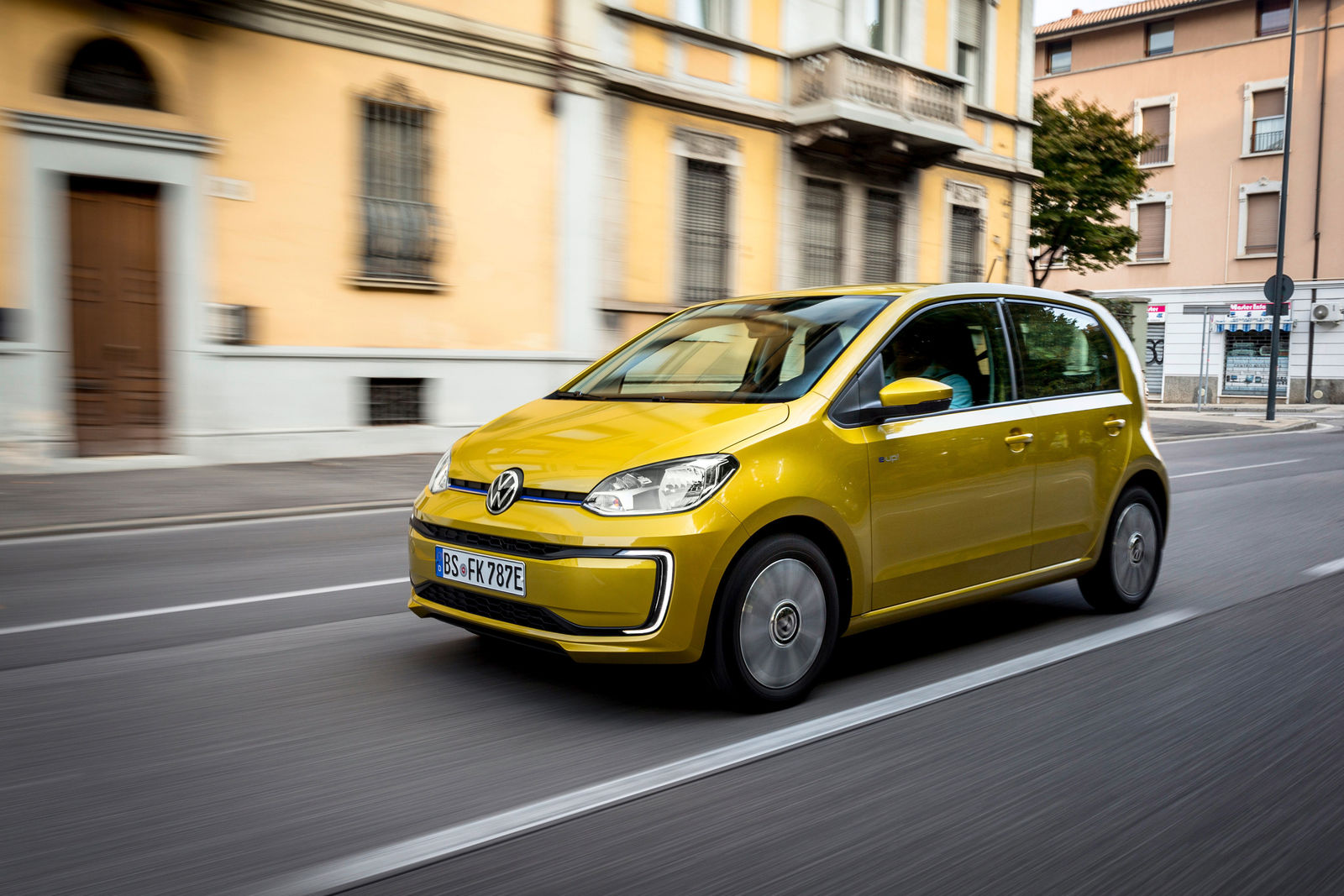Increased range, lower price: Volkswagen presents the next-level e-up! Its new battery means this electrically powered compact vehicle is capable of up to 260 km of range in real driving conditions. The revamped e-up! will arrive at dealerships in Europe in winter, with the price in Germany at just €21,975, from which subsidies are still to be subtracted. Leasing and financing rates, as well as running costs are also extremely low, making the brand’s smallest electric vehicle an attractive entry model to the world of Volkswagen e-mobility.
32.3 kWh usable energy capacity – the new battery. The box looks the same, but what’s inside is completely new, with the battery cells in the revamped e-up! offering a much higher energy density than the previous model. Its gross capacity has been almost doubled, from 18.7 to 36.8 kWh (corresponds to 32.3 kWh usable energy). With average energy consumption of only 12.9 – 12.7 kWh/100 km, the e-up! achieves a range of up to 260 km from one battery charge, in real driving situations. When the battery is empty, it can be recharged to 80% in just an hour via direct current; the CCS charging connection needed for this is available as an option. Using alternating current, achieving 80% charge at a 7.2 kW socket takes just over four hours.
An agile sprinter that gets up to 100 km/h in 11.9 seconds. The e-up! is compact but fully formed, with space for four people – and plenty of fun for the driver. At its peak, the electric motor delivers 61 kW (83 PS), and from a standing start it sends a powerful 212 Nm of torque to the front axle via a single-speed gearbox. The sprint from 0 to 100 km/h takes 11.9 seconds; acceleration stops at 130 km/h. The driver can choose between three driving profiles and five energy recovery levels. The large lithium-ion battery is installed beneath the vehicle floor, ensuring a low centre of gravity and agile handling. With six airbags and the new Lane Assist lane keeping assistant, even the smallest Volkswagen features a high level of safety as standard.
Access to electric mobility – at an affordable price. With the e-up!, Volkswagen offers its customers an entry-level model for electric mobility at a competitive price. In Germany the compact vehicle costs just €21,975, minus €4,380 in subsidies from Volkswagen and the state. Those driving the e-up! as a company car benefit from an additional advantage, as the tax payable is just 0.5% of the list price. Running costs are also low: the cost of the power needed to travel 100 km is less than €4 in Germany (as of autumn 2019).
Apps + more – the equipment. An attractive equipment is included as standard, for instance the Composition Phone radio system with Bluetooth interface and DAB+, not to mention the smartphone dock with the new maps + more app offering many navigation and multimedia functions. Via the We Connect app with e-Remote, e-up! customers can remotely start, stop and program charging and air conditioning while the car is parked. The Climatronic air conditioning system and new Lane Assist lane keeping assistance system complete the equipment list. For a striking look, choose the e-up! style with black or white roof, tinted glass in the rear, alloy wheels and blue background lighting for the vehicle interior.
Volkswagen has also put together three equipment packs themed around driver assistance, winter and comfort. They include features such as the cruise control system and rear view camera system, heating for seats and windscreens, as well as automatic headlights and a second remote control key. The offering is completed with individually available options such as the multifunction steering wheel with leather trim, or electronic engine sound for city traffic.
The electric offensive continues – Volkswagen powers forward. At its market launch in 2013, the e-up! was Volkswagen’s first all-electric model, and this upgrade represents part of the brand’s ongoing electric offensive: Volkswagen intends to launch more than 50 all-electric models on the market by 2025, with the Group aiming to sell up to three million electric vehicles per year.
The new ID.3 – which was presented at the IAA in Frankfurt in September 2019 and has been rolling off the production line in Zwickau since the beginning of November – plays a leading role in the electric offensive. It will be shortly followed by the SUV ID.CROZZ; then the successor to the camper van, the ID.BUZZ; and the ID.VIZZION saloon. By the end of 2022 alone, the Volkswagen Group will be investing more than €30 billion in electric mobility.
